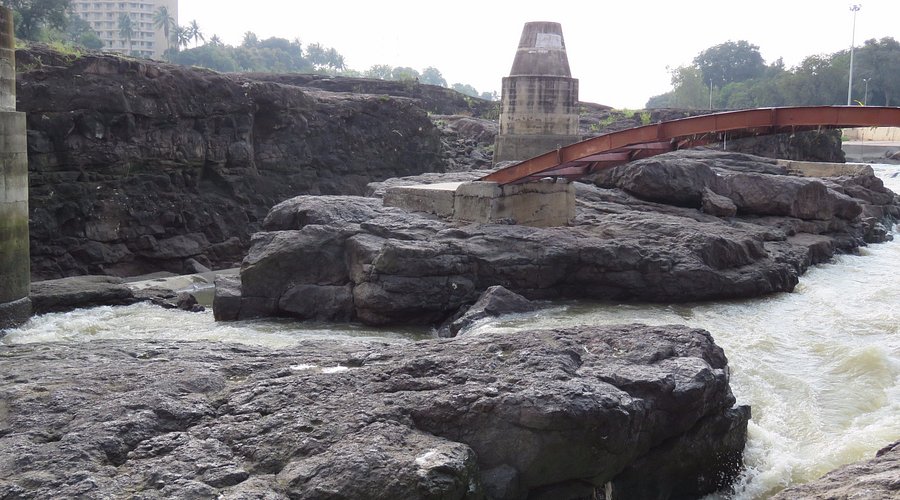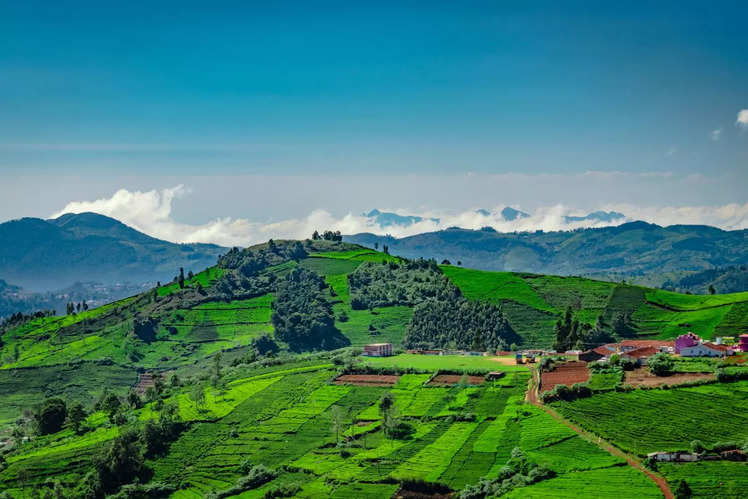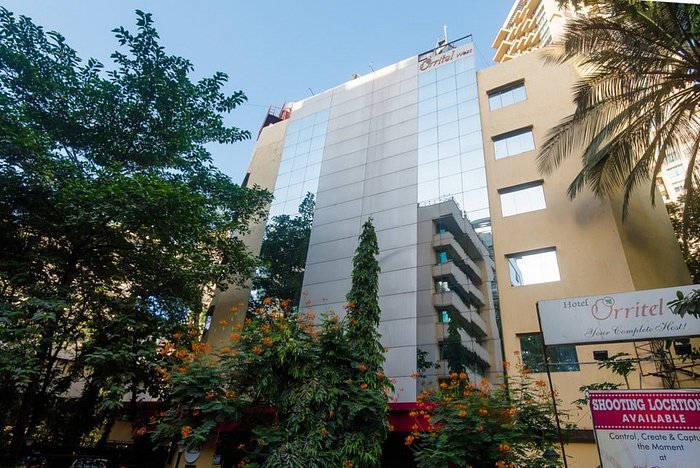Jhansi Fort stands as a testament to India’s rich history. Located in Uttar Pradesh, this fort is a symbol of bravery.
Built in the 17th century, Jhansi Fort has seen many battles. It played a crucial role during the Indian Rebellion of 1857. The fort was home to Rani Lakshmibai, a brave warrior queen. She fought valiantly against British rule from this very fort.
The structure of the fort is a blend of architecture and history. Its walls echo tales of heroism and sacrifice. Visitors often feel a sense of awe walking through its ancient corridors. This fort is not just a monument; it’s a story of courage. Discover the legacy and significance of Jhansi Fort in the pages of history.
Historical Significance
Jhansi Fort holds a prominent place in India’s rich history. It stands as a testament to the bravery and resilience of those who fought against oppression. Let’s delve into its historical significance.
Ancient Roots
Jhansi Fort’s origins trace back to the 17th century. It was built by Raja Bir Singh Deo of Orchha. The fort served as a stronghold for the Bundela kings. Its architecture reflects the grandeur of ancient Indian forts. The fort’s strategic location helped in defending against invaders. Over time, it became a symbol of power and prestige.
Colonial Era
During the British colonial rule, Jhansi Fort gained further importance. It was the epicenter of the 1857 revolt against British rule. Rani Lakshmibai, the Queen of Jhansi, led the resistance from this fort. Her courage and leadership are legendary. The fort witnessed fierce battles and stood tall against the British forces. Today, it remains a symbol of India’s fight for freedom.
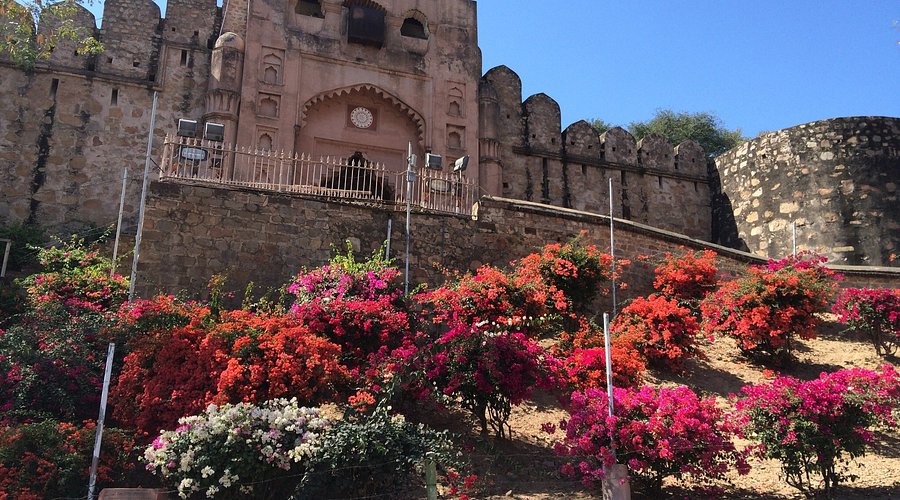
Credit: www.tripadvisor.com
Architectural Marvel
Jhansi Fort, an architectural marvel, stands tall on a hill in Uttar Pradesh, India. This historic fortress reflects the valor of Rani Lakshmibai. Its massive walls and intricate design attract many visitors.
Jhansi Fort stands as a testament to India’s rich history. The fort’s architecture attracts history buffs and tourists alike. It blends military strength with artistic elegance. Let’s explore the architectural marvel of Jhansi Fort.Design And Layout
Jhansi Fort’s design focuses on defense. Thick walls surround the fort. They provide protection against enemies. The fort covers 15 acres. It has ten gates, each with a unique name. The main gate is called “Khandero Gate.” Inside, the fort has several courtyards. These open spaces add to its charm. The courtyards connect different parts of the fort. They allow easy movement.Unique Features
The fort has a few unique features. One of them is the secret passage. This passage helped the rulers escape during attacks. Another feature is the Baradari. It is a beautiful pavilion made of white stones. The fort also has a temple. It is dedicated to Lord Shiva. The temple still stands tall. It reflects the religious side of the fort. The cannon placements are another unique feature. They are strategically placed. This shows the military genius behind the fort’s design.Role In Indian Rebellion
The Jhansi Fort holds a significant place in India’s history. It played a pivotal role during the Indian Rebellion of 1857. This massive fort witnessed some of the most critical battles and showcased the indomitable spirit of its leader, Rani Lakshmibai.
Key Battles
Jhansi Fort was a battleground for many key battles. One of the most notable was the siege of 1858. British forces surrounded the fort, aiming to capture it. The defenders, led by Rani Lakshmibai, fought fiercely. They used every resource to keep the fort from falling. The battle was intense and lasted several days. Despite their valiant efforts, the fort eventually fell. This battle became a symbol of resistance and courage.
Rani Lakshmibai’s Leadership
Rani Lakshmibai’s leadership was exceptional during the rebellion. She was known for her bravery and strategic mind. Her leadership inspired many to join the fight. She often led her troops into battle, showing no fear. Her presence boosted the morale of her soldiers. Even the British acknowledged her leadership skills. She became a legendary figure, symbolizing resistance against oppression.
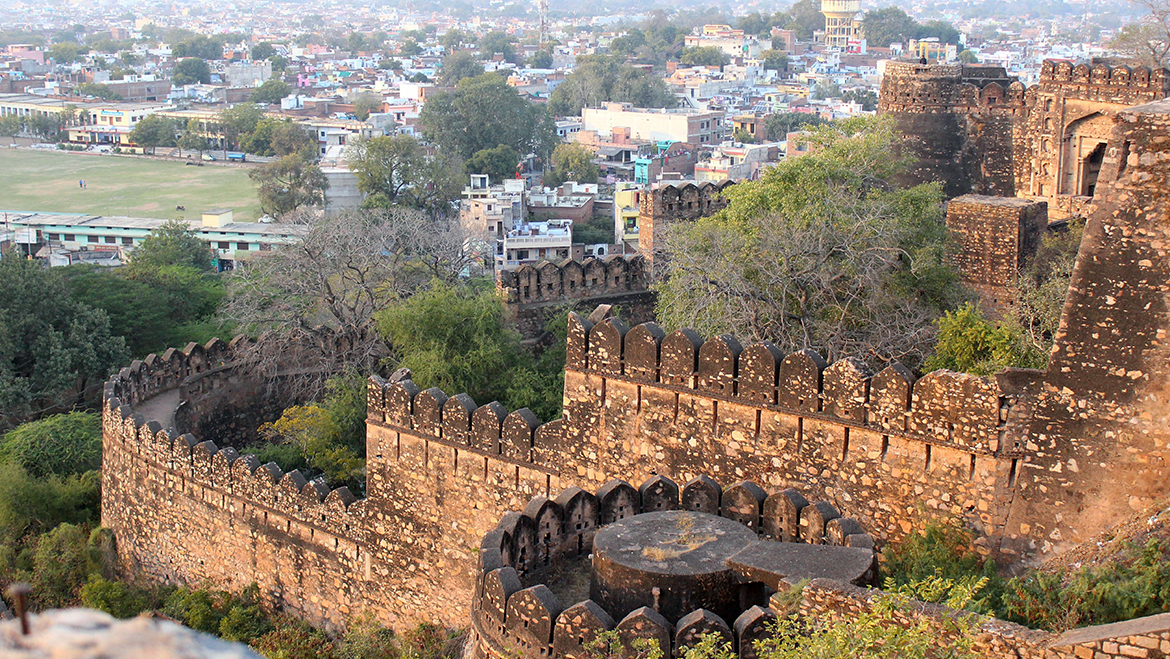
Credit: icdn.today
Cultural Impact
Jhansi Fort, an architectural marvel in the heart of India, is more than just a historical monument. Its cultural impact resonates deeply within the local community and beyond. The fort stands as a testament to bravery, heritage, and the undying spirit of its people. Let’s delve into how this iconic fort has shaped culture, folklore, and local traditions.
Folklore And Legends
The walls of Jhansi Fort echo with tales of valor and sacrifice, particularly those of the legendary Rani Lakshmibai. Her story is not just a chapter in history books but a living legend passed down through generations. Children grow up listening to tales of her bravery, often reenacting her legendary battles in local festivals and school plays.
Imagine walking through the fort, hearing the local guides narrate stories of hidden tunnels and secret passages. You can almost visualize the fierce Rani Lakshmibai riding her horse, sword in hand. These legends are not mere stories; they are a source of inspiration, instilling a sense of pride and courage in the hearts of the people.
Have you ever considered how a place becomes more than just a physical structure? It’s the stories and legends that breathe life into it, making it a symbol of cultural identity.
Influence On Local Culture
Jhansi Fort’s influence extends far beyond its walls. The fort is a focal point for cultural activities, celebrations, and local festivals. Every year, the Jhansi Mahotsav is celebrated with great pomp and show. This festival highlights the rich cultural heritage of the region, with performances of traditional dance, music, and dramas that depict the historical events related to the fort.
The local cuisine, too, bears the imprint of the fort’s influence. Traditional dishes, often prepared during festivals, are inspired by the royal kitchens of the fort. Ever tasted the local delicacies like Balushahi or Poha? These dishes carry flavors of history and tradition, making every bite a journey through time.
Moreover, the fort’s architecture influences local art and craftsmanship. The intricate designs and robust structures serve as a blueprint for local artisans, who incorporate these elements into their work, from pottery to textiles.
How often do you visit a place and feel its essence in the everyday life of its people? That’s the true cultural impact—a seamless blend of history, tradition, and daily life.
In conclusion, Jhansi Fort is not just a relic of the past; it’s a living, breathing entity that continues to shape and inspire the cultural landscape of its region. Whether through folklore, local festivals, or culinary traditions, its impact is profound and enduring.
Preservation Efforts
Jhansi Fort stands as a proud symbol of Indian history. The fort’s preservation is vital to keep its legacy alive. Various projects and government initiatives work towards this goal. These efforts ensure the fort remains in good condition for future generations.
Restoration Projects
Several restoration projects focus on maintaining the fort’s structure. Experts use traditional methods to repair damaged parts. These methods ensure the fort retains its original look. Skilled artisans work on these projects with dedication and precision.
Archaeologists conduct regular surveys to identify areas needing attention. They study old blueprints and historical records. This helps them make accurate restorations. The aim is to keep the fort as authentic as possible.
Government Initiatives
The government plays a key role in preserving Jhansi Fort. It allocates funds for restoration and maintenance. These funds support various projects and initiatives. The government also promotes awareness about the fort’s historical importance.
Local authorities collaborate with experts for better results. They organize workshops and training sessions for artisans. This ensures they have the skills needed for restoration work. Regular inspections and maintenance checks are also part of the plan.

Credit: en.wikipedia.org
Tourist Attractions
When you visit Jhansi Fort, you’re not just stepping into a historic monument; you’re immersing yourself in a vibrant tapestry of stories, legends, and breathtaking views. This magnificent fort in Uttar Pradesh, India, offers a myriad of attractions that cater to history enthusiasts, nature lovers, and adventure seekers alike.
Guided Tours
One of the best ways to explore Jhansi Fort is through a guided tour. Knowledgeable guides bring the fort’s history to life, sharing fascinating tales of valor and resilience. You’ll hear about Rani Lakshmibai, the warrior queen, and her legendary fight against the British during the 1857 rebellion.
Guides often have insider knowledge, pointing out hidden features like secret tunnels and ancient cannons. These tours usually last around two hours, providing ample time to ask questions and delve deeper into the fort’s rich past. If you’re a history buff, this is an experience you won’t want to miss.
Nearby Landmarks
Jhansi Fort is surrounded by several other intriguing landmarks that are worth a visit. Just a short walk away, you’ll find the Rani Mahal, the former palace of Rani Lakshmibai. This palace now houses a museum with artifacts from the queen’s era.
Another nearby gem is the St. Jude’s Shrine, a peaceful spot that offers a serene break from your historical exploration. The shrine’s architecture and tranquil environment provide a perfect contrast to the robust fort structure.
For those interested in local culture, the Jhansi Museum is a must-see. It showcases a variety of sculptures, paintings, and relics that depict the region’s rich heritage. The museum is located within the city and is easily accessible from the fort.
So, next time you’re planning a trip, why not include Jhansi Fort on your itinerary? How often do you get to walk through history while enjoying panoramic views and discovering hidden treasures?
What are you waiting for? Pack your bags and get ready to explore the grandeur of Jhansi Fort and its surroundings!
Visitor Experience
Jhansi Fort offers a unique visitor experience. The fort’s rich history and stunning architecture captivate all who visit. Walking through its gates, you feel transported to another era. The fort is a testament to India’s resilience and strength.
Travel Tips
Wear comfortable shoes. The fort has many stairs and uneven paths. Carry water to stay hydrated. The area can get quite hot. Hire a local guide. They provide valuable insights and stories. Protect your skin with sunscreen and a hat.
Best Times To Visit
Visit Jhansi Fort between October and March. The weather is cooler and more pleasant. Early mornings or late afternoons are ideal. The fort is less crowded, making your visit more enjoyable. Avoid the summer months. The heat can be intense and uncomfortable.
Educational Value
Jhansi Fort offers significant educational value through its rich history and architecture. Visitors can learn about India’s resistance against British rule.
### Educational Value Jhansi Fort isn’t just a historical marvel; it’s a treasure trove of educational opportunities. This ancient fortress, with its rich history and architectural grandeur, offers a learning experience that textbooks simply cannot provide. Exploring Jhansi Fort can ignite curiosity and foster a deeper understanding of India’s past. Let’s delve into how this site serves as an educational hub.School Trips
Organizing a school trip to Jhansi Fort can be a transformative experience for students. Walking through the fort’s corridors and standing in the same spots where legendary figures once stood can make history come alive. Imagine your students exploring the Rani Mahal, where the brave Rani Lakshmibai strategized her battles. These real-life experiences can deepen students’ engagement with history, making it tangible and memorable. Interactive tours can also include: – Guided tours: Knowledgeable guides can share fascinating stories and historical facts, enriching students’ understanding. – Activity sheets: Printable worksheets with quizzes and puzzles related to the fort’s history can keep students engaged. – Role-play sessions: Students can reenact historical events, enhancing their learning through active participation.Research Opportunities
Jhansi Fort is a goldmine for researchers. Whether you’re a history buff, an architecture student, or a cultural enthusiast, the fort offers a wealth of information. Every wall, every stone has a story to tell. Delving into the fort’s archives can unearth lesser-known tales and historical nuances that are not widely documented. Here are some practical tips for researchers: – Access local archives: Jhansi’s local libraries and archives house documents that can provide deeper insights into the fort’s past. – Conduct interviews: Engage with local historians or elderly residents who might share oral histories and personal anecdotes. – Photographic documentation: Capture detailed images of architectural elements for in-depth analysis. By taking these steps, you can uncover unique perspectives and contribute to the broader understanding of India’s rich history. ### Conclusion Jhansi Fort is not just a relic of the past; it’s a living classroom. Whether you’re organizing a school trip or conducting in-depth research, the fort offers endless educational opportunities. So, when are you planning your next visit to this historical gem?Frequently Asked Questions
Why Is Jhansi Fort Famous?
Jhansi Fort is famous for its role in the 1857 Indian Rebellion. It symbolizes Rani Lakshmibai’s bravery and resistance against British rule. Visitors admire its historical significance and architectural grandeur.
How Much Time Do You Need For Jhansi Fort?
You typically need around 2-3 hours to explore Jhansi Fort. Plan your visit to enjoy its historical significance fully.
Is Jhansi Fort Worth Visiting?
Yes, Jhansi Fort is worth visiting. It offers rich history, stunning architecture, and panoramic views. Ideal for history buffs and photographers.
What Is The Ticket Price Of Jhansi Fort?
The ticket price for Jhansi Fort is INR 25 for Indian citizens. Foreign tourists need to pay INR 300 for entry.
Conclusion
Jhansi Fort showcases India’s rich history and architectural brilliance. Visiting the fort offers a glimpse into the past. Explore the majestic walls and vibrant stories. Each corner holds tales of bravery and heritage. Jhansi Fort remains a symbol of valor and pride.
Experience the cultural legacy firsthand. Plan a trip to Jhansi Fort soon. Discover its beauty and historical significance. Your journey through history awaits.
{ “@context”: “https://schema.org”, “@type”: “FAQPage”, “mainEntity”: [ { “@type”: “Question”, “name”: “Why is Jhansi Fort famous?”, “acceptedAnswer”: { “@type”: “Answer”, “text”: “Jhansi Fort is famous for its role in the 1857 Indian Rebellion. It symbolizes Rani Lakshmibai’s bravery and resistance against British rule. Visitors admire its historical significance and architectural grandeur.” } } , { “@type”: “Question”, “name”: “How much time do you need for Jhansi Fort?”, “acceptedAnswer”: { “@type”: “Answer”, “text”: “You typically need around 2-3 hours to explore Jhansi Fort. Plan your visit to enjoy its historical significance fully.” } } , { “@type”: “Question”, “name”: “Is Jhansi Fort worth visiting?”, “acceptedAnswer”: { “@type”: “Answer”, “text”: “Yes, Jhansi Fort is worth visiting. It offers rich history, stunning architecture, and panoramic views. Ideal for history buffs and photographers.” } } , { “@type”: “Question”, “name”: “What is the ticket price of Jhansi Fort?”, “acceptedAnswer”: { “@type”: “Answer”, “text”: “The ticket price for Jhansi Fort is INR 25 for Indian citizens. Foreign tourists need to pay INR 300 for entry.” } } ] }

